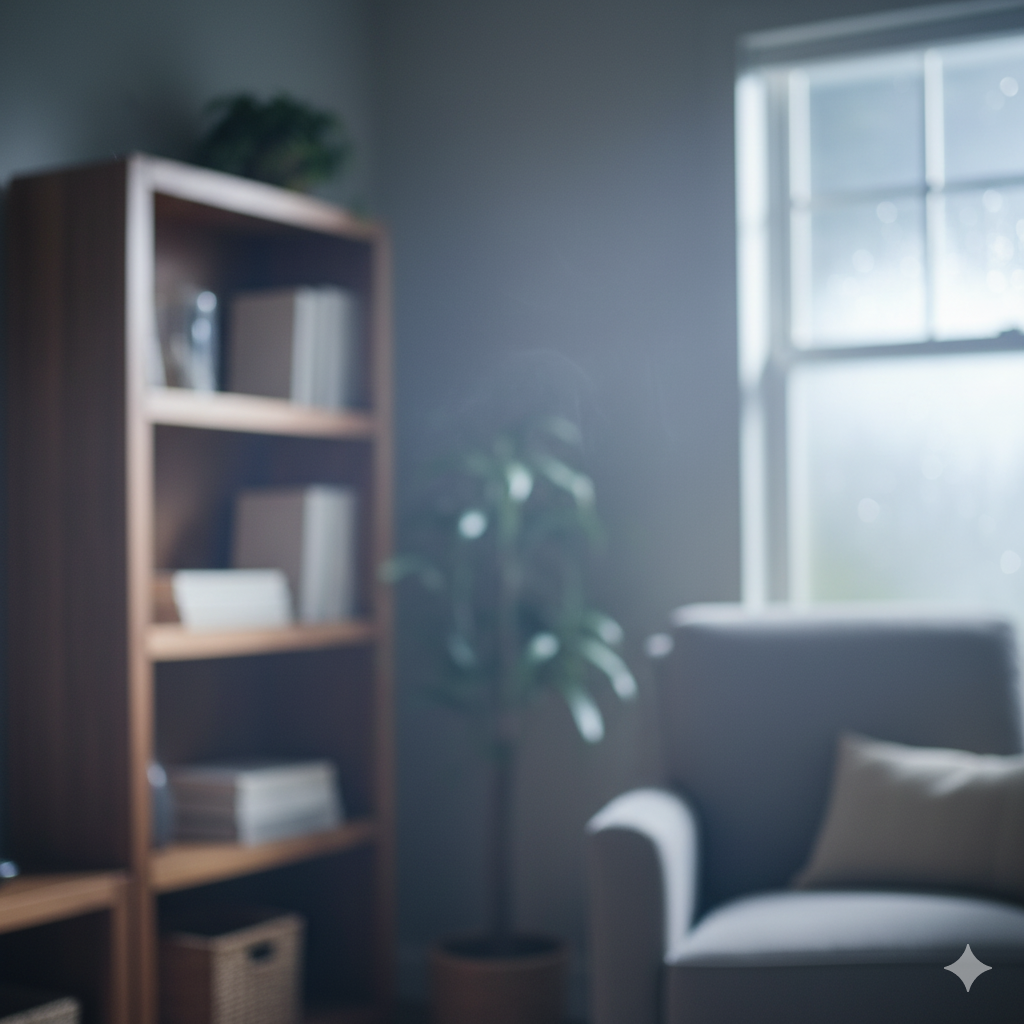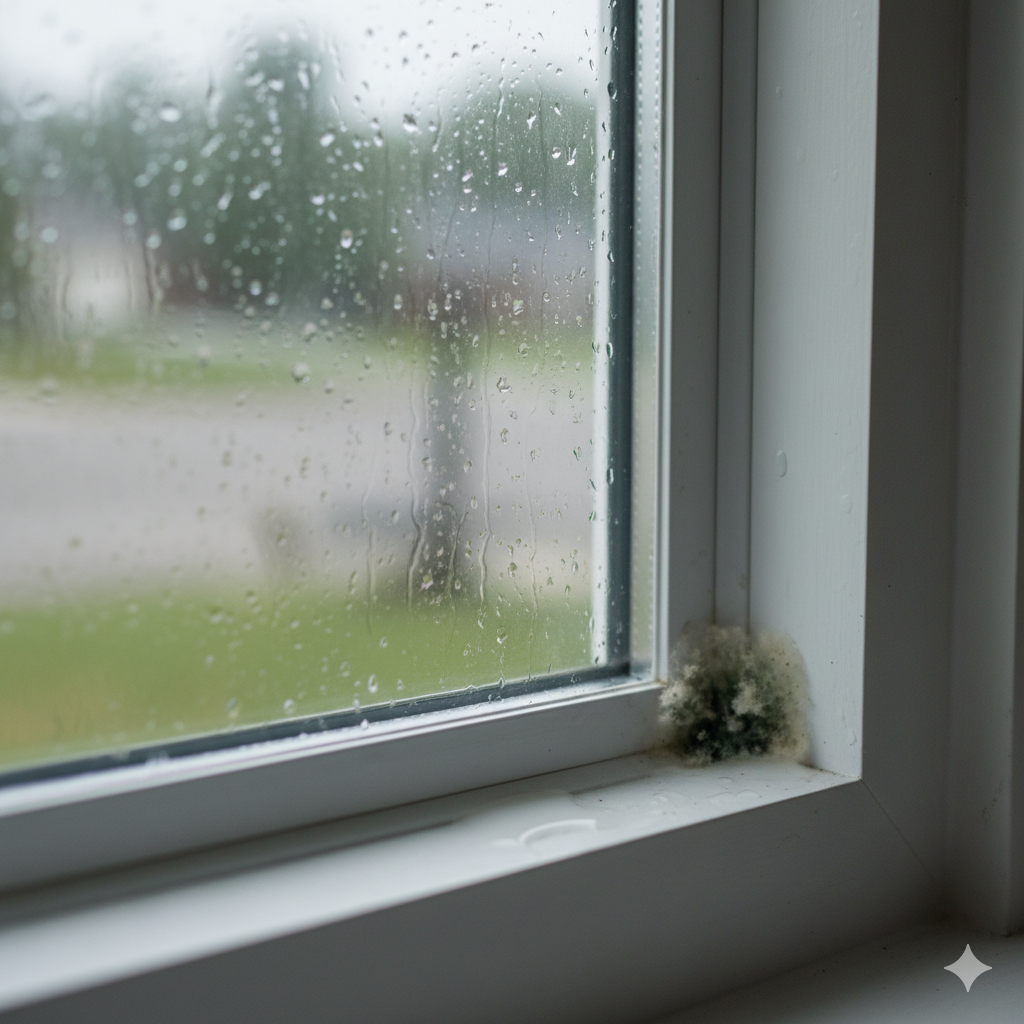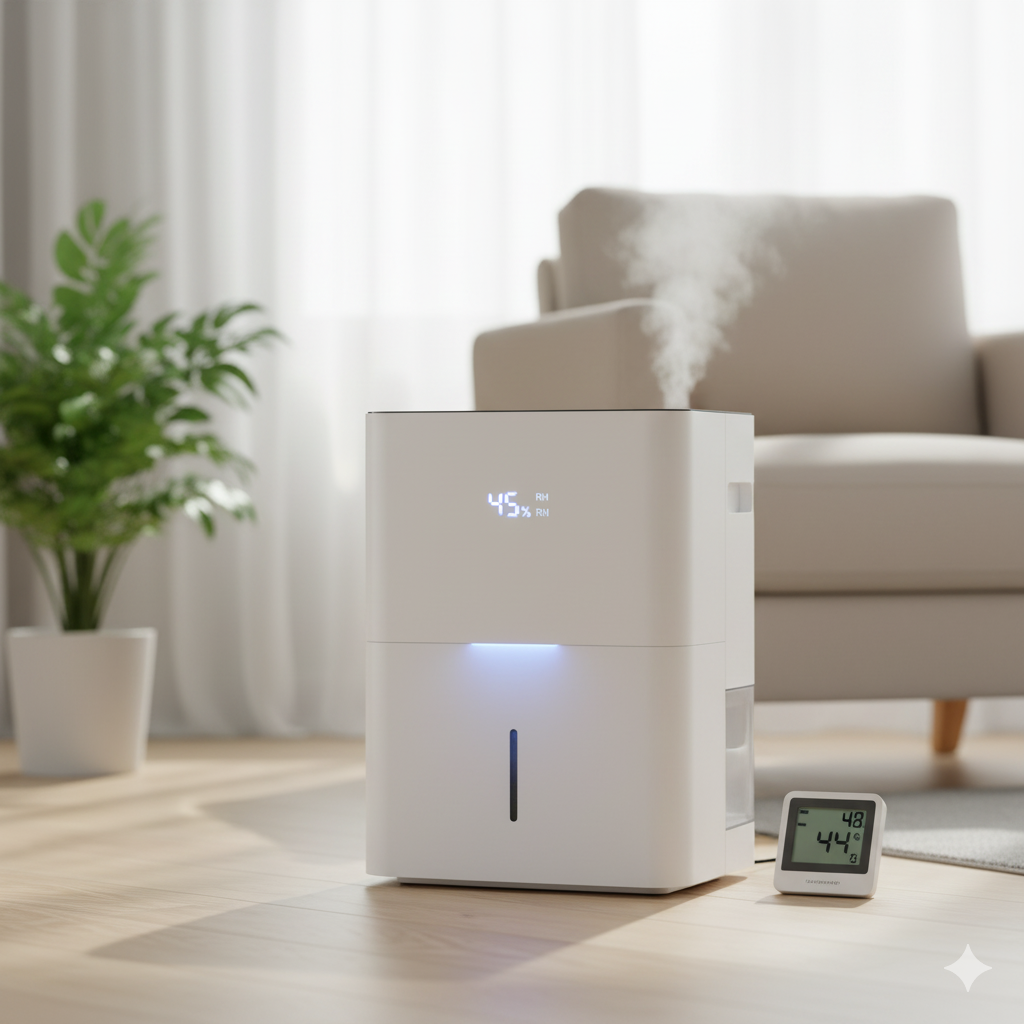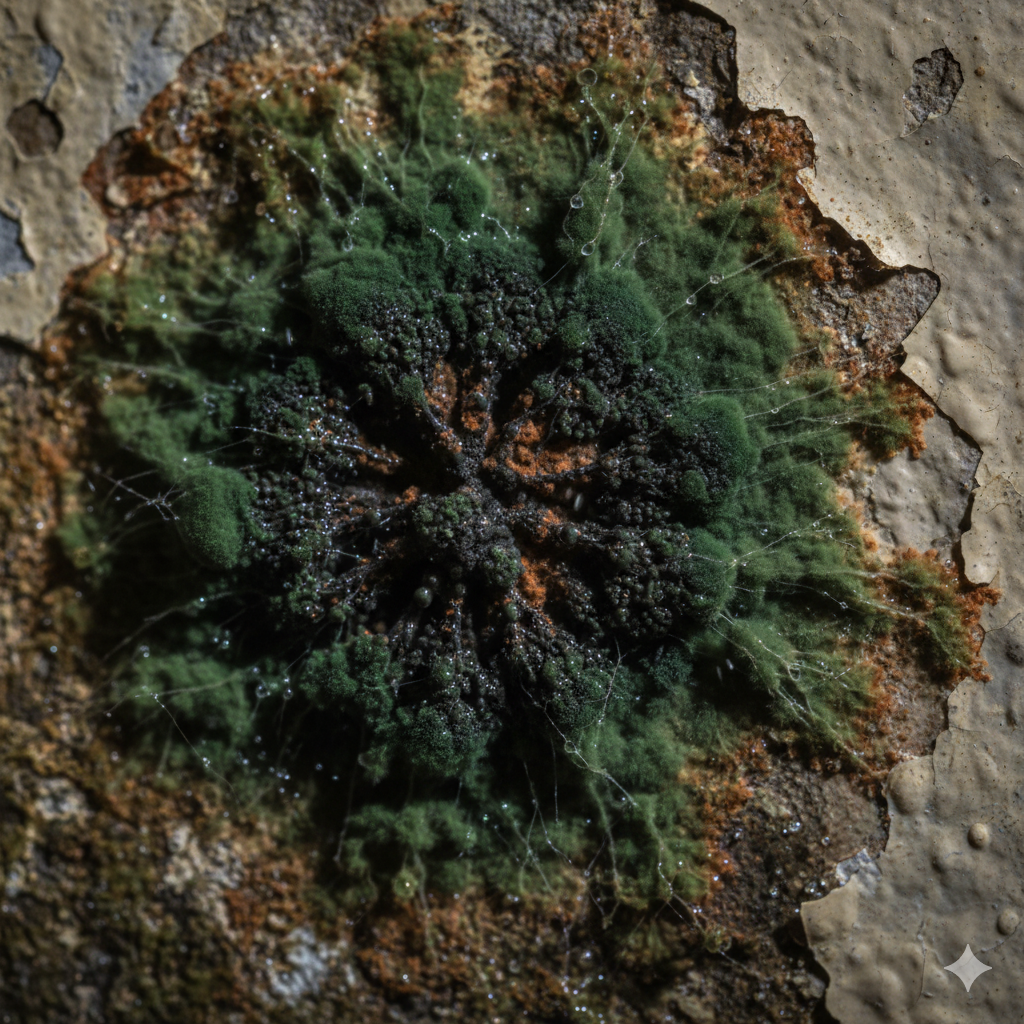Is Your Home Blooming? The Hidden Threat of Humidity This Rainy Season
Don't let high humidity invite mold! Learn what a 'humidity bloom' is, why your home is at risk this rainy season, and get essential tips for preventing mold growth.
That damp, sticky feeling is in the air. As the rain falls and the temperatures stay mild this October, we often seal our homes, cranking up the heat or AC to stay comfortable. But while we’re cozying up, we might be unintentionally rolling out the welcome mat for an unwanted guest: mold.
This isn't just a stray patch in the shower. We're talking about a "humidity bloom"—a rapid, widespread growth of mold fueled by the perfect storm of conditions created by this exact type of weather. It’s a hidden threat that can compromise your home's health and your own.
What Exactly is a "Humidity Bloom"?
Think of mold spores as microscopic seeds, always present in the air and on surfaces, waiting patiently. A humidity bloom is what happens when those spores are given the perfect conditions to germinate and flourish. The simple recipe is:
Sustained Moisture: An indoor relative humidity (RH) that stays above 60% for 72 hours or more.
Food Source: Mold isn't picky. It happily consumes drywall, wood, carpet fibers, dust, and paper.
Comfortable Temperature: It thrives in the same temperatures we do, typically between 60-80°F (15-27°C).
When these three factors align, dormant spores "bloom" into visible, odorous colonies that can spread quickly through a property.
The Perfect Storm: Why Your Home is at Risk Right Now
This time of year creates a perfect storm for humidity blooms. The frequent rain saturates the ground and raises the outdoor humidity, which inevitably seeps into our homes. The mild temperatures accelerate the growth process. Furthermore, as we keep windows closed against the rain, we trap this moisture inside, creating a stagnant, humid environment where mold can thrive.
The Telltale Signs: How to Spot a Problem Early
The most effective way to fight a humidity bloom is to catch it before it takes hold. Your senses are your best first line of defense. Keep an eye (and nose) out for these warning signs:
A Musty, Earthy Odor: This is the most common and often the first sign of hidden mold. If a room or closet smells perpetually damp, investigate.
Visible Condensation: Water droplets on windows, mirrors, or cold pipes are a clear indicator that the air in your home is holding too much moisture.
Surface Discoloration: Look for small, fuzzy spots or stains on walls, ceilings, or behind furniture. They can be black, green, white, or even orange.
Peeling Paint or Wallpaper: Bubbling or peeling surfaces are often a sign of moisture trapped behind them.
Worsening Allergies: If you or your family members are experiencing increased sneezing, coughing, or itchy eyes only when at home, it could be a reaction to elevated mold spores.
Small signs like window condensation and faint discoloration are the first clues your home's humidity is too high.
Proactive Prevention: Stop the Bloom Before It Starts
Prevention is always easier and cheaper than remediation. By taking a few key steps, you can make your home an inhospitable place for mold.
1. Monitor and Control Your Humidity: This is the single most important step. Purchase an inexpensive digital hygrometer to monitor your indoor relative humidity. Your goal is to keep it consistently below 60%, ideally between 30-50%.
2. Invest in a Dehumidifier: In a damp, rainy season, a dehumidifier is your best friend. Run it in chronically damp areas like basements, bathrooms, and laundry rooms to pull excess moisture directly from the air.
A dehumidifier is a powerful tool for maintaining a healthy indoor humidity level and preventing mold growth.
3. Boost Your Ventilation: Stagnant air is humid air. Use exhaust fans in your kitchen while cooking and in your bathroom during and after every shower (let it run for 20-30 minutes). If the weather allows, open windows on opposite sides of the house to create a cross-breeze.
4. Fix Leaks Immediately: A tiny drip from a pipe or a small leak in the roof can provide a constant source of moisture for a massive mold problem. Inspect under sinks, around appliances, and in your attic regularly.
5. Manage Water Around Your Foundation: Ensure your gutters are clean and downspouts direct water several feet away from your home. This prevents moisture from seeping into your basement or crawl space.
You've Found a Bloom... Now What?
If you've discovered a musty smell or a patch of mold, don't panic. Here’s a simple action plan:
Identify the Moisture Source: First, stop the water. Whether it's a leak, condensation, or poor ventilation, it must be addressed, or the mold will return.
For Small Areas (less than 10 sq. ft.): If the area is small and on a non-porous surface, you can likely handle it yourself. Wear an N95 mask, gloves, and eye protection. Clean the area with a mold-specific cleaner or a detergent solution. Never use bleach on porous surfaces like drywall, as it can't reach the "roots" of the mold.
For Large Areas or Porous Surfaces: If the mold covers a large area, is on drywall or wood, or if you suspect it's inside your walls or HVAC system, it's time to call a professional. Mold remediation specialists have the equipment and expertise to safely remove the mold and prevent its spread.
Under the right conditions, mold can spread rapidly. Widespread growth requires professional attention.
Protect Your Home This Season
Don't let the rainy season turn your safe haven into a greenhouse for mold. By understanding the threat of a humidity bloom and taking proactive steps to control the moisture in your home, you can breathe easier. Pay attention to the warning signs, invest in a little prevention, and ensure your home stays healthy, dry, and bloom-free.
#HumidityBloom, #MoldPrevention, #IndoorHumidity




